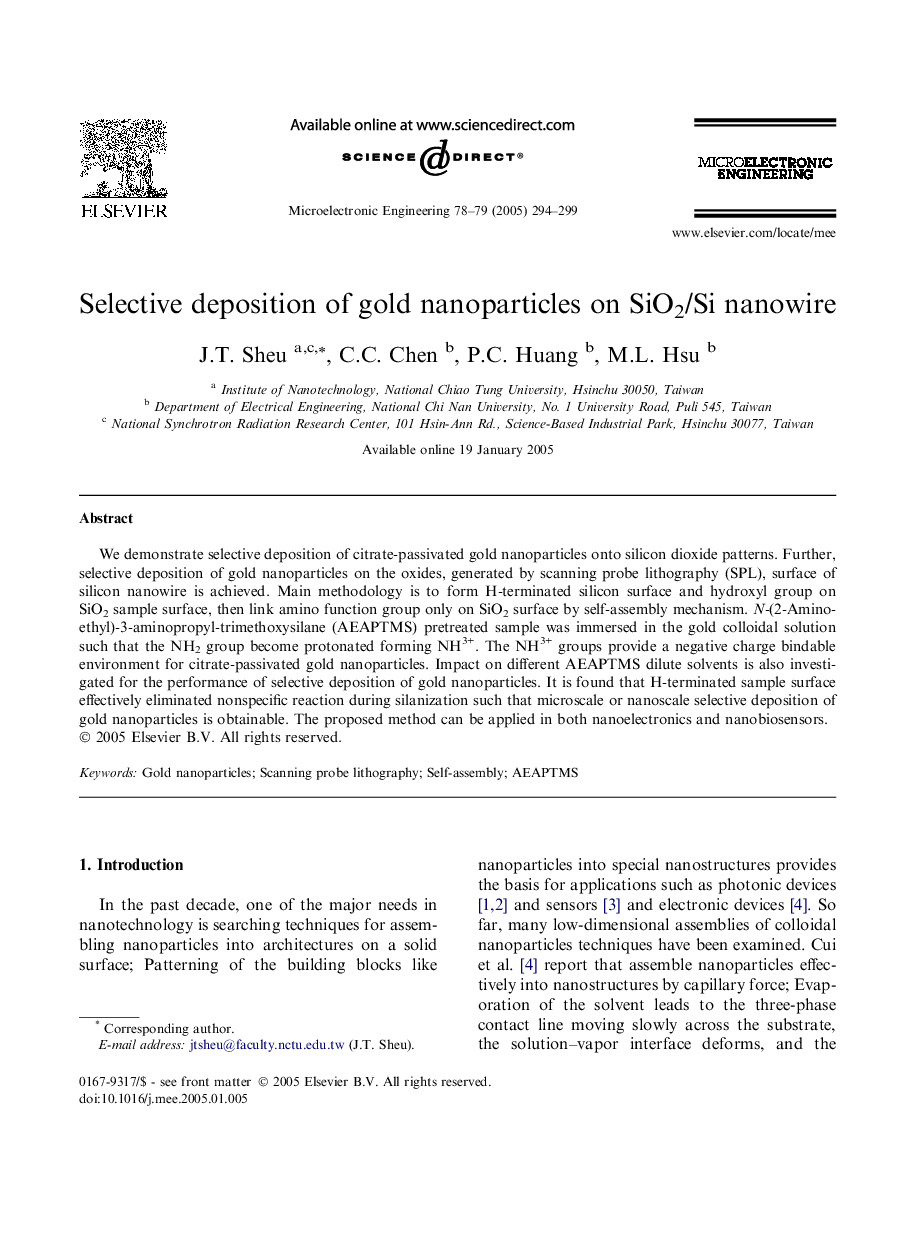| Article ID | Journal | Published Year | Pages | File Type |
|---|---|---|---|---|
| 9670592 | Microelectronic Engineering | 2005 | 6 Pages |
Abstract
We demonstrate selective deposition of citrate-passivated gold nanoparticles onto silicon dioxide patterns. Further, selective deposition of gold nanoparticles on the oxides, generated by scanning probe lithography (SPL), surface of silicon nanowire is achieved. Main methodology is to form H-terminated silicon surface and hydroxyl group on SiO2 sample surface, then link amino function group only on SiO2 surface by self-assembly mechanism. N-(2-Aminoethyl)-3-aminopropyl-trimethoxysilane (AEAPTMS) pretreated sample was immersed in the gold colloidal solution such that the NH2 group become protonated forming NH3+. The NH3+ groups provide a negative charge bindable environment for citrate-passivated gold nanoparticles. Impact on different AEAPTMS dilute solvents is also investigated for the performance of selective deposition of gold nanoparticles. It is found that H-terminated sample surface effectively eliminated nonspecific reaction during silanization such that microscale or nanoscale selective deposition of gold nanoparticles is obtainable. The proposed method can be applied in both nanoelectronics and nanobiosensors.
Related Topics
Physical Sciences and Engineering
Computer Science
Hardware and Architecture
Authors
J.T. Sheu, C.C. Chen, P.C. Huang, M.L. Hsu,
